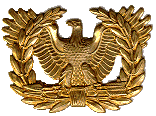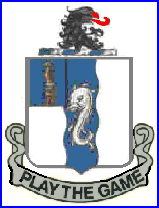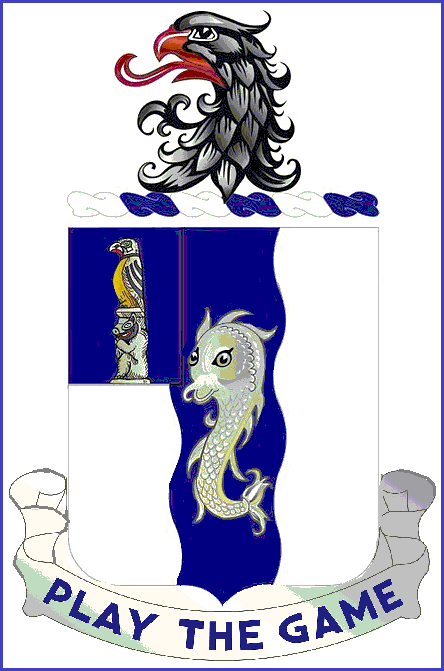1/50(M) Battalion Maintenance Personnel
Battalion Maintenance Officers |
Maintenance Technician |

|
Motor Sergeants |


|
CPT Mortimer Murphy 6/68-8/68
CPT Vilnis Gailitis 8/68-12/68
1LT Theodore Dennis 12/68-5/69
1LT Ray Sarlin 5/69-6/69 |


|
CW2 James B. Woodruff 1/67-9/68
CW2 James A. Turner 9/68-9/69
CW2 Gus Ettledorf -12/70 |
1SG Kenneth Lee, 5/68-5/69
SFC Edwin Jackson 8/68-8/69
|
MOS 63B20 |
MOS 63C20/30/40,
General Vehicle Repairman |
Other Maintenance MOS |
Christian, Fred L, PFC
Douglas, George R, SP4
Ebert, Robert E, SP4, 63B20
Lynch, Stanley S, SP4, 63B20
Paynter, Danny, SP4, 63B20
Wilson, Lawrence B, SP4, 63B20
|
Clark, Richard D, SP5,
Credeur, Walter R, SP4
De Maria, John P, SP5
Jones, Gary D, SP5
Kinsey, James D, SP5
Meek, Fred V, SP4
Sullens, Clarence, SP4
Thomas, Joseph W, SP4
Barnett, Michael L, SP5
Calhoun, Joshua, SP5
Congdon, Woodrow W, SGT
Hill, Gerald, SGT |
Duke, Elmer, SP4, 63F20, Recovery Specialist
Woodward, Jenner M, SSG, 12B40, Engineer
MOS 52B20, Power Generation Op/Mech
English, Eddie, SP4,
Miller, Melvin D, SP4
Ostrom, Patrick, SP4
Yazzie, Hugh, SP4
Montgomery, Cecil, SSG, MOS 65C40 Diesel-Electrical Repairman
|
Battalion Maintenance Platoon Organization
The platoon is organized as follows:
- Administration section. The administration section maintains Class IX (repair
parts) and the Army Maintenance Management Systems records. The prescribed load list (PLL)
stocks are maintained for each company and managed by the administration section's PLL
clerks. To facilitate rapid repair, selected high usage PLL items may be on the tracked
vehicles supporting a company team.
- Recovery Section. The recovery support section provides limited welding,
metalworking, and backup recovery support to the maintenance teams.
- Services Section. The maintenance services section provides maintenance support
to the rear elements of the battalion, plus backup support to company maintenance teams.
- Company Maintenance Teams. Company maintenance teams provide maintenance support
to each of the line companies. This support includes automotive, turret, and
communication-electronics maintenance, as well as recovery.
Based on the weapons systems within a company team, maintenance teams were task
organized, with maintenance teams supporting the same company as far as possible.
Maintenance personnel might be attached to the Scout Platoon or line Rifle Companies when
they operated detached from the battalion, and they would be equipped with a supporting
maintenance package that included thetools, test equipment, and PLL stocks necessary to
support the line unit. |
The battalion communications platoon installed, operated, and maintained the
communications system for battalion command and control and support elements. It was
responsible for establishing and operating the battalion radio, wire and courier
communications systems. |
1/50(M) Battalion Communications Personnel
Battalion Signal Officer |

|
Battalion Communications Chief |


|
1LT Noel Allgood Jun 68-Aug 68
1LT David Bess Aug 68-Oct 68
CPT James Filson Oct 68-Sep 69 |
|
|
Battalion Communications Platoon Organization
The platoon is organized as follows:
- Administration section. The administration section under the Battalion
Communications Officer advised the commander and staff on electronic
counter-countermeasures (ECCM), signals security, communications training, communications
planning, and selection of CP sites from a communications standpoint, and prepared the
command and signal paragraph of operations plans. They coordinated with signal units for
communications support, and supervised the communications activities in the battalion, to
include the installation, operation, and maintenance of the battalion communications
system and equipment. They controlled the COMSEC equipment and served as the battalion
COMSEC custodian, issued and accounted for COMSEC equipment, key lists, codes, ciphers,
SOI, SSI, and authentication systems.
- Wire Section. The wire section installs, operates, and maintains the landline
communications system for battalion command and control.
- Radio Section. The radio section installs, operates, and maintains the radio
communications system for battalion command and control. The combat net radio was the
major means for passing command and control and fire control around battlefield. The
battalion used AN/PRC-77 and AN/VRC-12 series radios for short-and intermediate-range
communication (up to 50 km) and the AN/GRC-106-based radio sets for longer ranges (up to
80 km and farther with proper antenna and frequency selection).
- Organizational Maintenance Mechanic. The organizational maintenance mechanic (MOS
31V) assigned to the platoon performs organizational maintenance on battalion headquarters
communications and night vision equipment. He also provided organizational maintenance,
calibration and assistance for the line units. Defective radios and other communications
equipment were turned over to the battalion communications platoon; the equipment was
either repaired or forwarded to the support battalion for repair,
|
The support platoon provided organic transportation, as well as Class I, Class III, and
Class V resupply to the battalion. It was composed of a platoon headquarters, ammunition
section, POL section, transportation section, and mess section. The platoon provides the
majority of the battalion's combat service support, and it transported ammunition, POL,
and supplies to battalion units, and prepared and issued meals to battalion personnel. |
1/50(M) Support Platoon Personnel
Support Platoon Leader |

|
Platoon Sergeant (Truck Master) |

|
Mess Sergeants |


|
1LT Howard Goldstein |
SGT Julius Thomas, 64C40 |
SFC Joseph Lagree 7/68-7/69
SFC Herbert Jones 12/68-12/69
SSG Michael N, Decker
SSG Jack Kerley |
Headquarters Section |
Transportation Section
MOS 64A10, Light Vehicle Driver
MOS 64B20, Heavy Vehicle Driver
MOS 64C20, Motor Transport Operator |
Mess Section
MOS 94B20, Food Service Specialist |
Gravatt, Edward L, SP5, 71H20, Personnel Specialist
Shelter, Gary R, SP4, 71L20, Administrative Specialist
|
Koons, Roger, PFC, 64A10, Light Vehicle Driver
Adams, Thomas J, SP5, 64B20, Heavy Vehicle Driver
Barnes, Dennis, SP5, 64B20, Heavy Vehicle Driver
Blad?, Richard A, SP4, 64B20, Heavy Vehicle Driver
Blof?, Donald J, SP4, 64B20, Heavy Vehicle Driver
Brown, Johnny, SP4, 64B20, Heavy Vehicle Driver
Burke, James P, PVT, 64B20, Heavy Vehicle Driver
Costa, Timothy, PFC, 64B20, Heavy Vehicle Driver
Finders, Sammie, SP4, 64B20, Heavy Vehicle Driver
Georgeson, Fredric, SP4, 64B20, Heavy Vehicle Driver
Haas, Richard W, SP4, 64B20, Heavy Vehicle Driver
Hasz, James P, SP4, 64B20, Heavy Vehicle Driver
Herrera, Larry, SP4, 64B20, Heavy Vehicle Driver
Miller, David G, SP4, 64B20, Heavy Vehicle Driver
Ramirez, Albert R, SP4, 64B20, Heavy Vehicle Driver
Stalkach, Jan, SP4, 64B20, Heavy Vehicle Driver
T**Kow, Bryant W, SP4, 64B20, Heavy Vehicle Driver
Green, William A, SGT, 64C20, Motor Transport Operator
Vogel, Richard J, SP4, 64C20, Motor Transport Operator
|
Anderson, Ronnie D, SP4,
Avala, Greg L, SP5
Bernard, Frederick, SP4
Briscoe, Joe W Jr, SP5
Bronson, Richard L, SP5
Coble, George R, SP6
Davis, Steven E, SP5
Dodson, Paul D, SP5
Dozois, Richard C, SP4
Duarte, Rafael A, SP4
Elde, Byron R, SP5
Garret, Rondal D, SP5
Garza, Ruben, SP5
Gilbreath, Therman, SFC
Hall, Wilbur S, SP4
Hardwick, Donald Jr, SP4
Hathaway, Larry B, SP5
Luton, Lloyd, SP4
Mandas, Steven M, SP4
Mendez, Jose A, SP5
Soto, Bernabe, SP4
Stewart, George R, SP4 |
|
Battalion Support Platoon Organization
The platoon is organized as follows:
- Headquarters Section. Although the support platoon leader works for the S4, he is
under the supervision of the HHC commander in the field trains. The platoon leader is
assisted by the support platoon sergeant, who is also the truck master of the
transportation section. The support platoon also has the task force decontamination
vehicle and operator to assist in unit decontamination.
- Transportation Section. The transportation section is organized and equipped to
transport fuel, ammunition, and supplies to the companies. The section normally transports
a portion of the unit basic load of ammunition plus fuels and lubricants. The
transportation section has a POL vehicle supervisor and, in armor battalions, an
ammunition sergeant. It also has drivers assigned to operate the section's cargo vehicles.
- Mess Section. The mess section is organized and equipped to prepare meals for all
elements of the task force.
|
|






